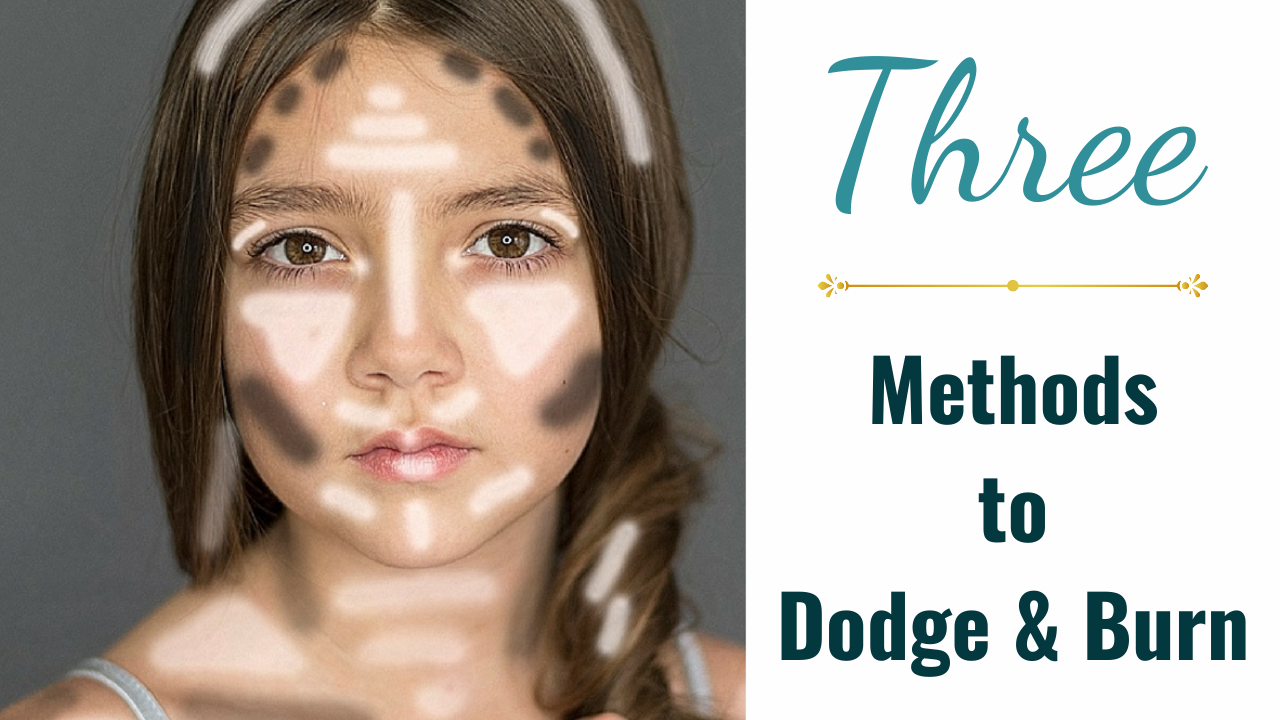Unlock tutorials, tools, and resources to fuel your creativity. Let’s get started!

Methods to Dodge and Burn
How to 3 methods to Dodge and Burn
One of my favorite processes in editing is dodge and burn. I get asked often, "How did you get that illustrated look?" "How did you make your subject pop like that?" and "How did you make that image look like a painting?"
The answer is always...layers and layers of dodge and burn.
Dodge and burn are used to lighten and darken specific areas of an image and are based on the darkroom technique to regulate exposure to those particular areas. It is often used to emphasize and de-emphasize features of the artist's images.
Dodging is intended to lighten specific areas, while burning tends to darken specific areas.

There are so many ways to dodge and burn your image within photoshop. These days, I use the dodge and burn layer that I have built into my Ultimate Workflow Action, but a few of my other favorite techniques are:
1. The dodge and burn tools within photoshop
To begin, create a duplicate layer of your background. Next, choose your dodge or burn tool and select between your mid-tones, shadows, or highlights. Next, brush on to the desired areas and use the sponge tool to correct and color shifts. You can also change the blending mode to luminosity for this.
2. A 50% gray layer
This method involves using black and white brushes on a 50% gray layer to achieve your desired effect. The first thing you'll want to do is create a new layer, fill it with 50% gray, set the blending mode to overlay, and duplicate the layer to have one for dodge and one for the burn. (You can do both the dodge and burn on one layer if you like, but you will have more control to adjust the opacity of each if you do them separately) Next, grab your white brush to do your dodging and your black brush for your burning.
3. Curves
For this method, you will bring the mid-point up under Rgb, invert the layer, and brush onto the desired area that you would like to dodge. You will do the opposite and bring your midpoint down to burn with curves. Be sure that you are not bringing your points too far away from the center, as you want to keep this effect subtle, and as always, several low opacity layers built up will give you a more natural look than going all out at once. Also, avoid any color shifts by setting the layer's blend modes to luminosity.
 So why dodge and burn?
So why dodge and burn?
Dodge and burn allow you to bring out the highlights and emphasize the shadows in your images, allowing your subject (and background if you dodge and burn your background) to pop and bring to attention all of the details in the picture. Also, if there are areas that you would like to alter or minimize, dodge and burn are perfect for that too. It's always important not to drastically change or modify the natural highlights and shadows to not distort your images.

The image below is a guide of where I typically like to dodge and burn for portraits, but always try to go with the natural lighting patterns of each of your specific images.

Now that you've learned a few different methods for using dodge and burn your images, try them out and see which one works best for you! That's it! I hope you enjoyed this blog post, and I hope you check out the full video by joining my premium membership today.
Happy editing!
Tara Lesher

